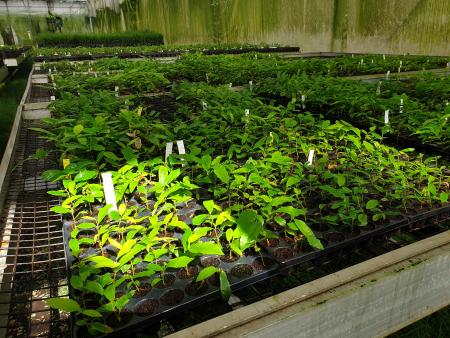
Objective:
Chestnut ink disease, caused by root pathogens (Phytophthora sp. ), induces dieback and mortality in sweet chestnut, C. sativa. Classical biological control can be efficient using ink resistance rootstocks that block the entrance of the fungus.
In this context, selected ink-resistant chestnut clones need to be propagated massively. Here, a method is presented for multplication and rooting clones under photoautotrophic conditions.
Context:
The European sweet chestnut is in certain areas in decline due to the ink disease caused by Phytophthora cambivora and Ph. cinnamomi, but ink resistant hybrids of Castanea sativa with Asian chestnuts species have been obtained. The most valuable clones must be propagated vegetatively for their use as rootstocks.
For this purpose, shoots can be grown in a continuous immersion system using bioreactors. In this study, four chestnut genotypes were multiplied, trying different types of rooting supports (rockwool) and assessing five variables : nº of shoots/plant, multiplication coefficient, shoot length, nº of rooting shoots and photosynthetic pigment levels.
Contacts:
Further information:
Cuenca Valera B, Luquero Ramos L, Ocaña Bueno L, Vidal González N (2017). Propagación de castaño a gran escala usando micropropagación fotoautotrófica. 7º Congreso Forestal Español, Cáceres.
http://secforestales.org/publicaciones/index.php/congresos_forestales/article/download/18640/18372/